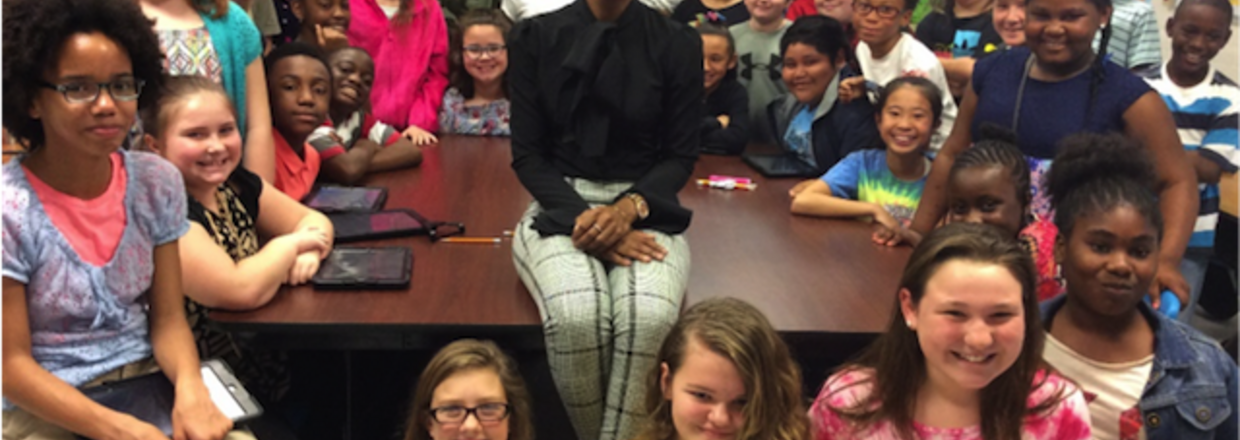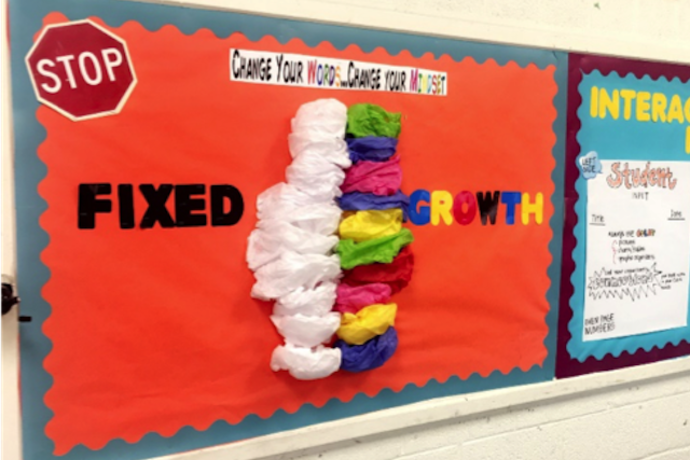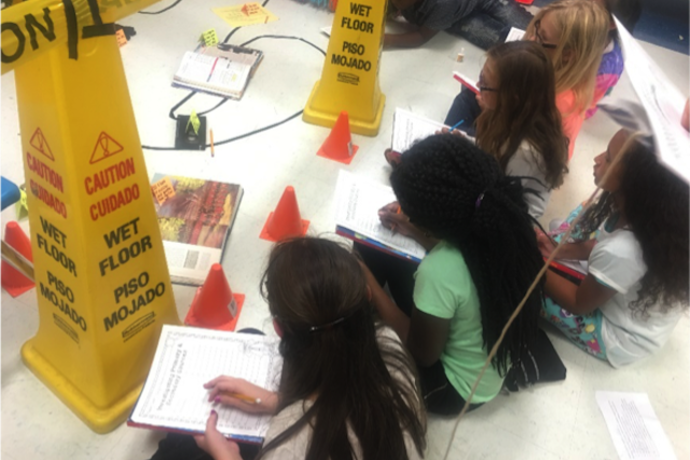
One Day, Today...
Keiada Holmes (South Carolina '16) shares her approach to developing student leaders and creating a positive classroom culture that affirms students from all backgrounds.
March 2, 2018
"I am bright, there is nothing I cannot do. Yesterday is behind me. Tomorrow is to come. No excuses. I am a leader. No excuses. I won’t give up. No excuses. I will stay focused. No, I am not perfect, and neither are you. And if I fail, working hard I must do.”
These are the lines that echo within the 5th grade hallway outside of my small South Carolina classroom daily. These words create a positive classroom culture and helps my students to believe their potential, driving them towards learning and development that will equip them for the future.
Why positive classroom culture matters.
While the dimensions of my classroom are small, the love and expectations behind those doors exceed the space provided. Having a positive classroom culture is one of the most important elements of a successful learning environment. Those of us who teach should work to establish a classroom culture centered on the belief that every student can succeed. In this classroom, we can teach students the behavior we expect, provide opportunities for consistent participation, and implement positive reinforcement to help students feel good about their decisions and repeat rewarding behavior.

The role of diversity in my classroom
I conceptualize diversity in my classroom as the understanding that each student brings his or her own unique experiences, strengths, and ideas. These differences can be along dimensions of race, ethnicity, sexual orientation, gender, socio-economic status, ability, religious or political beliefs, or other different ideologies.
These student experiences are a determining factor in my lesson planning. Incorporating a variety of perspectives into my teaching, and offering students new ways of looking at their discipline, changes their perspectives on life. Whether I am incorporating diverse perspectives into my social studies content or teaching students about cultural differences, I want to ensure that my classroom is a respectful and safe environment.
Additionally, it is important to understand neighborhood demographics, strengths, concerns, and challenges. Students who feel their experiences are un-welcomed, judged, stereotyped, disrespected or invisible find it extremely difficult to engage in discussions that emerge on the topics of identity and justice. Those whose stories and voices are heard and reflected in the classroom are more likely to engage and translate their learning into action. It’s far too easy for those of us who teach to use methods and lessons that we personally find comfortable. We must consider that each year, each class period we are given a unique set of young minds that operate differently. What worked last year, may not work this year–and that is okay! We should step beyond our comfort zone and provide relevant and engaging curriculum, presented in interesting and student-centered ways.

My approach and practice for cultivating student leaders.
Daily, I aim to empower my students to be self-advocating leaders in the classroom, at home, and in the community. Throughout the year, my students develop confidence to take ownership of their own learning, a characteristic that will aid them this year and for the rest of their lives.
As a class community, we listen attentively to peers while working together to create a safe and positive learning environment. This means relishing in each other’s successes and encouraging each other through failures. Our class community is a place where it is okay to fail and try again. Additionally, it is vitally important that we make connections to the real world in every lesson. We demonstrate a curiosity and an excitement for learning by grasping concepts in different ways and always challenging the limits of our own ability.
Some lessons require more time and investment, like building a curriculum around personal narratives, or incorporating identity-based responses into the study of texts. By creating an environment where students take ownership of their own work and learning, we create an atmosphere where students feel invested in and are proud to take ownership of their accomplishments.
In my classroom vision, students are be empowered to:
- Have fun and feel safe in the classroom
- Fail and have the confidence try again
- Solve rigorous problems with a growth mindset
- Work together towards short-term and long-term goals
- Be their own best advocates
When we change our mindset, we change lives.
A teacher’s job is to provide students with many opportunities to learn and grow. Reminding students of the importance of individuality and marching to the beat of their own drum, cultivates exceptional leaders. I do not believe a cookie cutter format allows our students to grow, fail and achieve. Failures are the foundation of success. My students understand the only mistake we make in life is the inability to try. When my students try, it gives me the opportunity to meet them where they are and build.
Each day brings a new journey. Some days cause much joy and others disappointment. I must view my students for who they are and the leaders they will become. My time in the classroom has taught me when we change our mindset, we change our instruction and when we change our instruction, we change lives.


